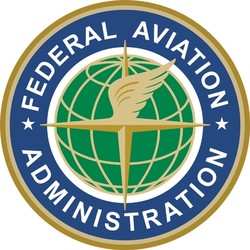Tue, Aug 26, 2014
Meetings Planned With FAA To Develop Advisory Circulars
HAI, along with the Association of Air Medical Services (AAMS) and the Air Medical Operators Association (AMOA), are continuing their work with the FAA to ensure that helicopter air ambulance operators have the information they need to comply with the helicopter safety rule issued earlier this year — often known as the HEMS rule.

The three associations are planning meetings with the agency in the coming weeks to develop advisory circulars and other guidance to help operators comply with the multi-year roll-out of the new rule.
Earlier this summer, as a result of pointed input from the three associations, the FAA issued a direct final rule and three technical corrections to the safety rule, which itself was issued in late February. The changes reflect industry’s input, and enhance safety.
The direct final rule modifies 14 CFR 135.611, a new section that was added as part of the helicopter safety rule, to allow helicopter air ambulance (HAA) pilots to “assess the weather at a departure point where current weather observations are not available and to depart if the pilot's observed ceiling and visibility is greater than certain weather minimums. This change to the current regulation will permit helicopter air ambulance flights to enter the National Airspace System under instrument flight rules (IFR) when visibilities and ceilings are below visual flight rules (VFR) based on pilot weather observations, thus increasing the safety of the flight.”
Had the FAA not taken this action, pilots would have been unable to depart IFR from landing sites without weather reporting — which would likely include most of the incident sites they would be departing from — until VFR conditions existed. It allows HAA pilots operating in low visibility to take full advantage of air traffic separation services.
In addition, the FAA made technical corrections the sections 91.155, 135.609, and 135.621.
- The change to 91.155 removes duplicative text and clarifies a table included in the section, but does not change the intent of the Final Rule.
- The change to 135.609 clarifies that weather minimums outlined in the part only apply to VFR operations.
- The change to 135.621 eases the burden for operators with regard to required briefings for medical non-flight personnel.
HAI, AAMS, and AMOA continue to have regular contact with the FAA as the agency develops the guidance necessary for HAA operators to comply with the new rules and enhance safe air ambulance operations.
More News
Terminal Radar Service Area Airspace surrounding designated airports wherein ATC provides radar vectoring, sequencing, and separation on a full-time basis for all IFR and participa>[...]
Very High Frequency (VHF) The frequency band between 30 and 300 MHz. Portions of this band, 108 to 118 MHz, are used for certain NAVAIDs; 118 to 136 MHz are used for civil air/grou>[...]
“From approximately November 2021 through January 2022, Britton-Harr, acting on behalf of AeroVanti, entered into lease-purchase agreements for five Piaggio-manufactured airc>[...]
Also: Virtual FLRAA Prototype, IFR-Capable Autonomous A/C, NS-32 Crew, Golden Dome Missile Defense Bombardier announced that the first production Global 8000 successfully completed>[...]
Aero Linx: The 1-26 Association (Schweizer) The Association’s goal is to foster the helpfulness, the camaraderie, and the opportunity for head-to-head competition that is fou>[...]
 ANN's Daily Aero-Term (05.29.25): Terminal Radar Service Area
ANN's Daily Aero-Term (05.29.25): Terminal Radar Service Area ANN's Daily Aero-Term (05.30.25): Very High Frequency (VHF)
ANN's Daily Aero-Term (05.30.25): Very High Frequency (VHF) Aero-News: Quote of the Day (05.30.25)
Aero-News: Quote of the Day (05.30.25) Airborne 05.23.25: Global 8000, Qatar B747 Accepted, Aviation Merit Badge
Airborne 05.23.25: Global 8000, Qatar B747 Accepted, Aviation Merit Badge ANN's Daily Aero-Linx (05.30.25)
ANN's Daily Aero-Linx (05.30.25)



